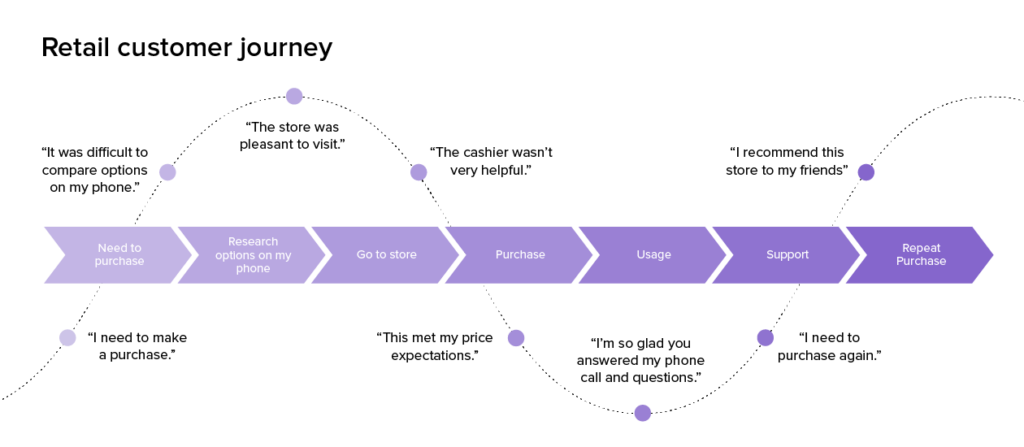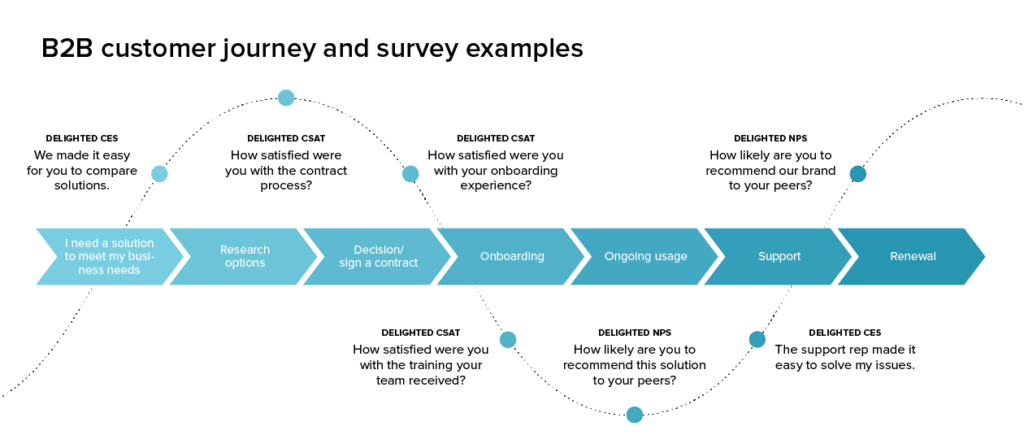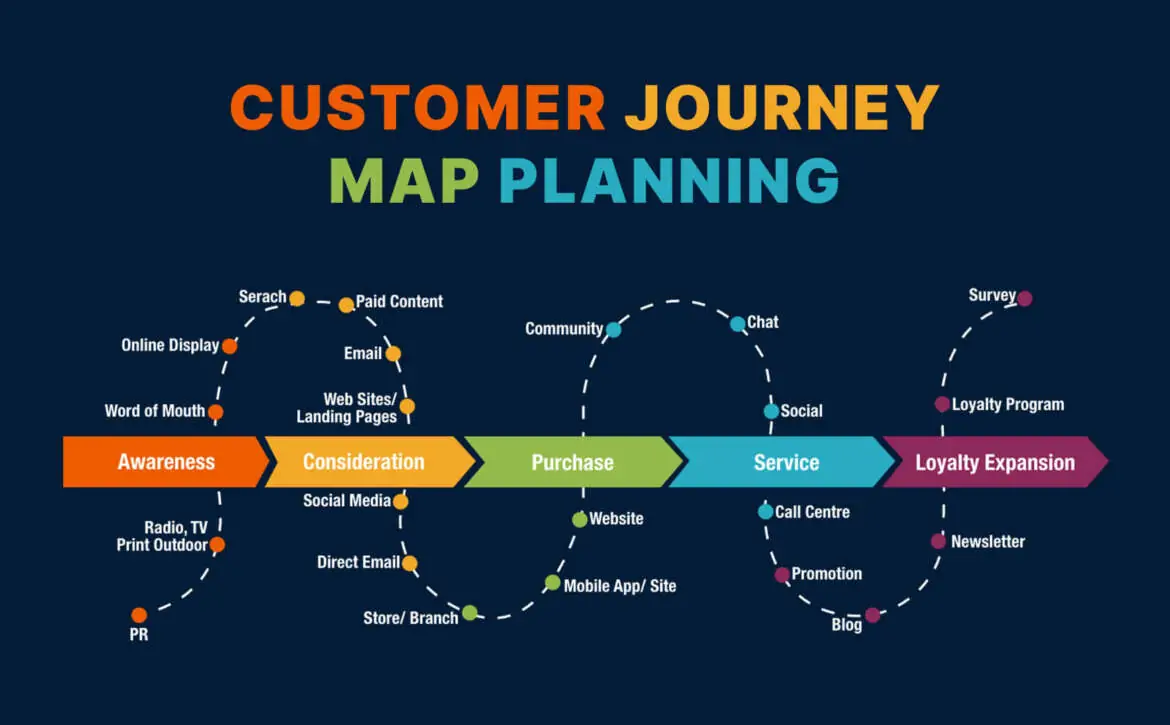The Art and Impact of Customer Journey Mapping
Customer journey mapping is a strategic process that involves creating visual representations of a customer’s interactions with a brand across various touchpoints. This comprehensive guide explores the significance of journey mapping, its applications, benefits, and strategies for effective implementation. By understanding the customer journey, businesses can gain valuable insights, identify pain points, and enhance overall customer satisfaction. The future of journey mapping involves digital transformation integration, predictive mapping, and real-time adaptations, making it a crucial tool for nurturing customer-centric success.
Illuminating the Pathways
Customer journey mapping is a strategic process that involves creating visual representations of a customer’s interactions with a brand across various touchpoints. These touchpoints encompass every interaction, from initial awareness to post-purchase engagement. The goal is to gain a holistic understanding of the customer’s experience, identifying pain points, opportunities for improvement, and moments of delight.
Applications of Customer Journey Mapping
- Insightful Customer Understanding: By mapping the entire customer journey, businesses gain deep insights into customer behaviors, preferences, and expectations. This understanding forms the foundation for creating tailored and impactful customer experiences.
- Identifying Pain Points: Customer journey maps highlight areas where customers may encounter challenges or frustrations. Identifying these pain points is crucial for addressing issues and streamlining the customer experience.
- Enhancing Customer Satisfaction: A seamless and positive customer journey contributes to overall satisfaction. Through journey mapping, businesses can pinpoint areas for improvement, leading to enhanced satisfaction and loyalty.
- Aligning with Customer Expectations: Understanding customer expectations at each touchpoint allows businesses to align their offerings and communication with what customers anticipate, fostering a stronger connection.

Elevating Customer Experiences
- Strategic Decision-Making: Armed with insights from customer journey maps, businesses can make informed and strategic decisions. This includes optimizing processes, allocating resources effectively, and prioritizing initiatives that directly impact the customer experience.
- Cross-functional collaboration: Customer mapping encourages collaboration across departments. It is a cross-functional exercise that involves input from marketing, sales, customer service, and other relevant teams, fostering a unified approach to customer satisfaction.
- Proactive Issue Resolution: Anticipating potential challenges through journey mapping allows businesses to proactively address issues before they escalate. This is especially crucial in preventing customer dissatisfaction and negative word-of-mouth.
- Continuous Improvement: Customer journey maps are dynamic tools that evolve with changing customer behaviors and market dynamics. This adaptability enables businesses to continually refine and improve their strategies.
Strategies for Effective Mapping
- Define Customer Personas: Before embarking on journey mapping, businesses should create detailed customer personas. Understanding the diverse needs and preferences of different customer segments forms the basis for accurate mapping.
- Identify Touchpoints: Map out all the touchpoints a customer has with the brand. This includes online interactions, in-person experiences, customer service interactions, and post-purchase engagements. Comprehensive mapping ensures a holistic view.
- Gather Customer Feedback: Actively seek and incorporate customer feedback into the journey mapping process. This firsthand input provides valuable insights into customer perceptions, emotions, and areas needing improvement.
- Visualize the Journey: Use visual elements to create a clear and intuitive representation of the customer journey. This could include flowcharts, diagrams, or interactive visualizations that effectively communicate the customer’s progression.
“Quality in a service or product is not what you put into it. It is what the customer gets out of it.”
-Peter F. Drucker

Challenges and Considerations
While customer mapping offers significant advantages, businesses must navigate certain challenges:
- Data Accuracy: Journey maps rely on accurate and up-to-date data. Ensuring data accuracy is essential for creating maps that truly reflect the customer experience.
- Subjectivity: Interpretations of the customer journey may vary among stakeholders. Striking a balance between subjective insights and objective data is crucial for creating comprehensive maps.
- Overlooking Complexity: Customer journeys can be complex, involving numerous touchpoints and channels. Oversimplification may lead to overlooking critical aspects of the journey, impacting the effectiveness of the maps.
The Future of Journey Mapping
As customer expectations continue to evolve, the future of journey mapping will see innovations and adaptations:
- Digital Transformation Integration: With the rise of digital interactions, journey mapping will increasingly incorporate digital touchpoints, ensuring a comprehensive view that aligns with the digitized customer landscape.
- Predictive Mapping: Advanced analytics and AI will enable businesses to predict future customer behaviors and tailor journeys accordingly. Predictive mapping allows for proactive adjustments to meet evolving customer needs.
- Real-time Mapping: As technologies advance, the ability to create and update journey maps in real time will become more prevalent. Real-time mapping ensures that businesses stay agile and responsive to dynamic customer journeys.
Nurturing Customer-Centric Success through Journey Mapping
Customer journey mapping is not merely a tool; it is a strategic approach to cultivating customer-centric success. By understanding, visualizing, and enhancing the customer journey, businesses can forge stronger connections, drive satisfaction, and ultimately navigate the path to success in a competitive market. As the business landscape evolves, journey mapping remains a guiding compass for those committed to delivering exceptional customer experiences.


